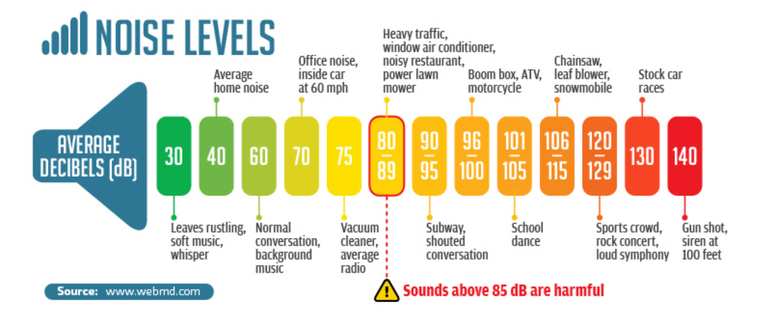
Understanding unsafe levels of sound and taking proactive steps to protect our hearing is crucial for maintaining long-term auditory health. In this blog, we will explore the concept of safe sound levels, the impact of excessive noise on our hearing, and practical measures we can take to safeguard our ears.
Defining Safe Sound Levels
Sound is measured in units called decibels (dB), which indicate the intensity or loudness of a sound. The human ear has a remarkable ability to perceive a wide range of sounds, from the faintest whispers to thunderous roars. However, prolonged exposure to sounds above certain decibel thresholds can lead to irreversible damage to our auditory system. To understand safe sound levels, here are a few key benchmarks:
- 60 dB (A) – Normal Conversation: Everyday conversations typically occur at this level, which is considered safe for extended exposure without causing harm.
- 85 dB (A) – Prolonged Exposure Limit: Sounds at or above this level, such as heavy traffic, power tools, or concerts, can be harmful if experienced for an extended period.
- 100 dB (A) – Serious Risk Zone: Exposure to sounds like chainsaws, motorcycles, or loud music concerts at this level can cause damage after just 15 minutes of exposure.
- 120 dB (A) – Immediate Danger: Sounds like fireworks, firearms, or jet engines at close range can cause immediate harm, potentially leading to permanent hearing loss.

The Impact of Excessive Noise on Hearing
When we encounter unsafe sound levels, delicate structures within our inner ear, including hair cells, are exposed to excessive vibrations. Over time, these vibrations can cause damage and even destruction to these hair cells, leading to hearing loss. Additionally, loud noises can contribute to tinnitus, a persistent ringing or buzzing sensation in the ears. Prolonged exposure to excessive noise can result in both temporary and permanent hearing impairment, making it crucial to protect our hearing.
Protecting Your Hearing
- Awareness and Limiting Exposure: Recognize potentially harmful noise sources in your environment, such as construction sites or loud music venues, and limit your exposure to them. Take breaks from noisy situations and find quiet spaces to give your ears a chance to recover.
- Use Ear Protection: When engaging in activities with high noise levels, such as attending concerts, operating power tools, or using firearms, wear proper ear protection. Earplugs or earmuffs can significantly reduce the intensity of sound reaching your ears, providing essential protection.
- Maintain Safe Listening Habits: When using personal audio devices or headphones, keep the volume at a reasonable level. Follow the 60/60 rule: listen at no more than 60% volume for no more than 60 minutes at a time. Additionally, opt for noise-canceling headphones, which help reduce the need for higher volumes in noisy environments.
- Create a Quiet Environment: At home or in the workplace, take steps to reduce unnecessary noise. Utilize acoustic insulation materials, such as curtains or rugs, to absorb sound and minimize its impact. Limiting background noise can help protect your hearing and create a more peaceful atmosphere.
- Regular Hearing Check-ups: Schedule regular appointments with an audiologist for hearing evaluations. Early detection of hearing loss can lead to timely intervention and prevent further deterioration.
Our ability to hear is a precious gift, one that should not be taken for granted. Understanding safe levels of sound and taking proactive steps to protect our hearing is essential in maintaining auditory health and preventing long-term damage. By being aware of potentially harmful noise sources, utilizing ear protection, maintaining safe listening habits, creating quiet environments, and seeking regular check-ups, we can enjoy the sounds of life without compromising our hearing. Remember, protecting our hearing is a lifelong commitment that should be prioritized for our overall well-being.
